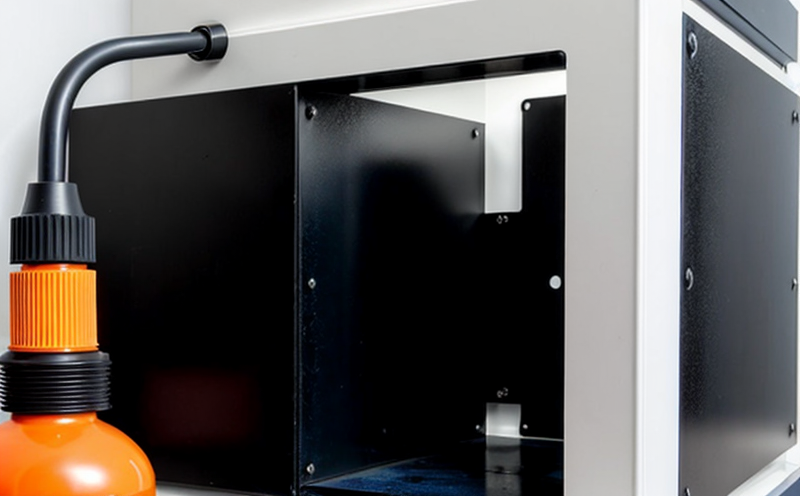ISO 11890 Volatile Organic Compounds in Surface Coatings
The testing of volatile organic compounds (VOCs) in surface coatings is a critical aspect of quality management and compliance for industries dealing with nanocoatings and surface treatments. This test, defined by ISO 11890, evaluates the emission rates of VOCs from surface coatings to ensure they meet environmental and health safety standards.
Volatile Organic Compounds are chemicals that have high vapor pressure at normal temperatures and can evaporate easily into the atmosphere. In nanocoatings and surface treatments, these compounds play a significant role in providing properties such as durability, flexibility, and adhesion. However, their presence also poses potential risks to human health and environmental impact.
The ISO 11890 standard provides a standardized method for measuring VOC emissions from surface coatings under controlled conditions. This ensures that the test results are reliable, repeatable, and comparable across different laboratories. The testing process involves exposing coated specimens to specific humidity and temperature conditions over a defined period, after which the concentration of VOCs is measured using gas chromatography or other appropriate analytical techniques.
The importance of this test cannot be overstated for several reasons:
- It helps in ensuring compliance with local and international environmental regulations.
- It supports the development of safer products by identifying potential hazards early in the product lifecycle.
- It aids quality control by providing consistent data to monitor production processes.
The testing process begins with careful preparation of the coated specimens. This involves applying a uniform layer of the coating onto a suitable substrate, typically glass or metal panels. The specimens are then conditioned in a controlled environment before being exposed to specific humidity and temperature conditions for an extended period. During this time, VOCs released from the surface coatings into the air are collected and analyzed using gas chromatography or similar technologies.
Understanding the scope of ISO 11890 testing is crucial for ensuring accurate results. The standard applies specifically to volatile organic compounds in surface coatings as defined by their chemical composition and physical properties. It does not cover other types of emissions, such as those from solvents used during application or curing processes.
The acceptance criteria for this test are based on the emission rates of VOCs measured under specified conditions. Compliance with these criteria ensures that the surface coating meets regulatory requirements and is safe for use in various applications.
Implementing ISO 11890 testing requires specialized equipment and expertise to ensure accurate results. At our laboratory, we utilize advanced gas chromatography systems capable of detecting trace levels of VOCs. Our experienced technicians follow strict protocols to prepare specimens and conduct the tests under controlled environmental conditions.
The test results provide valuable insights into the performance of surface coatings across various applications. By understanding the emission rates of VOCs from these coatings, manufacturers can make informed decisions about product design and formulation. This knowledge is vital for minimizing adverse health effects while maintaining effective coating properties.
Why It Matters
The importance of ISO 11890 testing in nanocoatings and surface treatments cannot be overstated. This test plays a crucial role in ensuring that the coatings used in various applications are safe for human health and environmentally friendly.
Emissions from VOCs can have significant impacts on indoor air quality, contributing to respiratory issues and other health problems when present in high concentrations. By conducting ISO 11890 testing, manufacturers can identify potential hazards early in the product lifecycle, allowing them to develop safer products. This not only protects end users but also enhances corporate reputation by demonstrating a commitment to sustainability.
From an environmental perspective, minimizing VOC emissions helps reduce air pollution and contributes to cleaner environments. This aligns with global efforts towards reducing greenhouse gas emissions and improving overall public health. The testing process ensures that the coatings meet strict regulatory requirements, thereby promoting responsible product stewardship.
Applied Standards
| Standard | Description |
|---|---|
| ISO 11890 | Method for measuring the volatile organic compound (VOC) emissions from surface coatings. |
The ISO 11890 standard is widely recognized and used in industries dealing with nanocoatings and surface treatments. It provides a reliable method for determining VOC emission rates, ensuring that products meet environmental and health safety standards.
Why Choose This Test
- Ensures compliance with international regulations.
- Promotes the development of safer nanocoatings and surface treatments.
- Supports quality control by providing consistent data for monitoring production processes.
- Minimizes adverse health effects associated with VOC emissions.
The ISO 11890 test is essential for industries that require stringent environmental controls. By choosing this test, manufacturers can ensure their products meet the highest standards of safety and quality.





